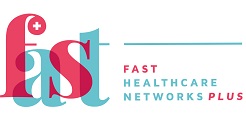Clinical Utility of Raman Spectroscopy
A project led by Professor Anthony Rowbottom at Preston Hospital and the University of Central Lancashire.
Raman spectroscopy is an optical technique that measures the chemical composition and molecular structure of a sample. Utilisation of the “molecular fingerprint” of Raman spectra has proven an effective analytical approach in geology, semiconductor, materials and polymer science fields. The application of Raman spectroscopy and microscopy within biology is rapidly increasing and it is a valuable analytical tool for various applications. In collaboration with Professor Frank Martin’s group at University of Central Lancashire, he has demonstrated the potential clinical applications of Raman to various cancers, anti-microbial resistance (AMR), neurodegenerative disease, renal disorders and more recently the diagnosis of primary immunodeficiency.
As the use of Raman in the laboratory and clinical setting increases there will be a need to better characterise and standardise protocols. Whilst the techniques are not quantitative, creation of a reference library will be needed, and understanding of the elements that impact on result variations. Working with members of the KTP program Prof. Rowbottom and his group will address the requirement for the analytical process including elements of the pre- and post-analysis. Currently, data is available from discrete studies; as these become incorporated into clinical practice development of reference preparations and exploration of quality assurance delivery will be needed. During the 12 months they will establish the variation in methodology in and between centres, result interpretation and reporting and the range of equipment used. They will also explore approaches to data extraction and mathematical modelling and any differences between technologies.
Prof. Rowbottom would also like to begin defining parameters that affect results and identify how these might be addressed to standardise practice across centres. This would include variation observed between serum, plasma and tissue and perhaps highlight the requirement for the creation of a national reference library along with recommendations for method validation.
The aim of this work is to provide guidelines for the introduction of Raman spectroscopy in diagnostic and clinical practice, encompassing requirements for accreditation. Working with manufacturers at an early stage will allow the identification of changes that might need to be incorporated to support the wider adoption of Raman across the NHS. This project should facilitate discussion and increase the pace that Raman spectroscopy could be introduced across the NHS, thus, potentially improving patient outcomes in a number of areas such as cancer, AMR and neurodegenerative disease. Furthermore, it should bring together experts at an early stage to promote a strong network approach to realise the maximum benefits.
